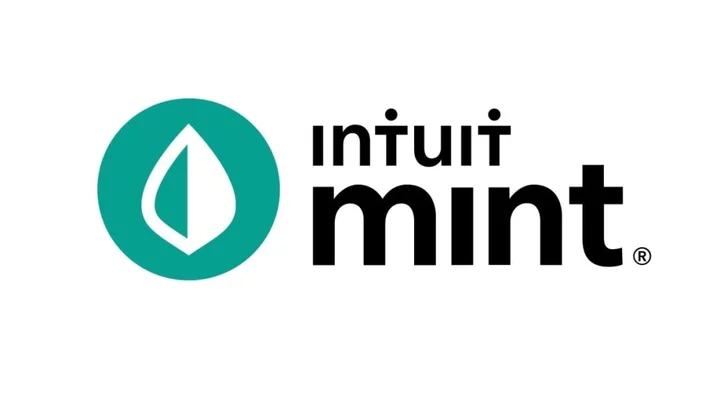For years, Mint was the personal finance app to beat. It gives you a deep dive into all the financial elements that make up your net worth. It's simple and easy to use with smart financial tools and has always been free. Occasionally you see targeted offers for financial products like credit cards, but that's how Mint and many other free personal finance apps are funded. For years, there wasn't much formidable competition. That has changed, thanks to Simplifi by Quicken, our Editors' Choice winner. Simplifi is not free, at about $48 per year, but it is a comprehensive personal finance app that doesn't cost much, and it's better than Mint in a few areas.
How Much Does Mint Cost?
Mint has always been free, but there's also a paid version. It's only available on the iPhone and iPad, however. Mint Premium costs $4.99 per month and includes removing the in-app ads, subscription cancellation, and advanced data visualization.
I get that the company needs ads to support the free content, but I’m disappointed that the other features are behind a paywall and only available on iOS. Android users can get ad removal only for 99 cents per month, but they get none of the other extra features.
That said, if you use the free version, you get a lot in exchange for having to occasionally see personalized offers for financial products. Some of the ads interrupt other content, like your list of transactions, but most are confined to the Marketplace tab.
Many personal finance apps are free, making their money through ad referrals to financial products, as Mint's free version does. Rocket Money is technically free but most of the features you'd want require a $36-per-year subscription. As mentioned, Simplifi goes for about $48 per year, though it's often on sale.
How Does Mint Work?
With very little input from you (your Social Security number and the login information for your online banks), Mint gives you an overview of all the money you receive and spend. It helps you understand how you might change your habits to improve your cash flow.
You can see your bank account activity, loan status including credit cards, and investment portfolio by importing their transactions. Mint also tracks the value of assets like property and vehicles by consulting third-party sites. It helps you plan for the future by creating budgets and setting financial goals, and it helps you analyze your past with charts, graphs, and tables. You also get at-a-glance insights, so you can check your credit score quickly and find out if you can afford to buy something while you’re standing in line at a store.
(Credit: Intuit/PCMag)Mint Is Easy to Use, But Could Be Clearer
Most people should get the hang of Mint quickly. The app has so many tools and has been around so long that it feels crowded, though. The browser-based version uses a navigation menu to deal with this problem, and it would be great to see a similar setup in the mobile app. As it is, you have to scroll a lot until you learn what’s available on both versions. The Overview (dashboard) in particular could serve users better.
When using the mobile app, I'm able to quickly see how much I've spent this month in specific categories, like gas and restaurants, but I can't figure out where to set spending targets, better known as budgets. It's handled very well in the browser-based version, but in the mobile app, you have to click the Notifications icon to find it, which isn’t intuitive. You can also find pending alerts, login problems for accounts, and bills due.
Simplifi and Rocket Money are easier to learn and navigate. Granted, they’re newer and haven’t had years upon years of updates to manage. But I was able to learn my way around more quickly with those two apps.
Pulling Transaction Information From Your Financial Accounts With Mint
Once you’ve supplied your login information for online bank and other financial accounts, Mint shows you the current balance for each one and a list of recent transactions. This list is one of the first things you see when you sign in. You can drill down on each transaction to see its underlying details.
Connecting your bank accounts doesn’t always go smoothly—that's true of all personal finance apps that connect to banks, though it can be frustrating in Mint. Sometimes the financial site needs additional information to grant access. Problems come up for a variety of reasons. All you can do is come back later, try to reconnect, and pay attention to any messages from Mint.
(Credit: Intuit/PCMag)Mint has a good system for managing transactions in the app. Your imported income and expenses appear in registers, categorized automatically and, for the most part, accurately. You can edit their descriptions and add tags and notes, split them, and mark them as duplicates or delete them. Mint also supports rules, so transactions containing the same vendor name, for example, are categorized automatically; in other words, all charges from Nail Express get categorized as personal care. You can export transactions in CSV format and edit multiple ones simultaneously. Rocket Money is not quite as flexible here, but it does let you mark transactions as tax deductible. Quicken Premium (not to be confused with Simplifi by Quicken) is king in this area, though.
For Reports, Use the Web Version of Mint
You’re not likely to spend a long time poring over charts and graphs showing your financial history on Mint’s mobile apps. That's good, because it has far fewer of them than the browser-based version’s Trends pages, which are terrific. They’re customizable, and you can drill down to see the data behind them. Several categories are supported: Spending, Income, Net Income, Assets, Debts, and Net Worth. It's Mint’s best feature.
(Credit: Intuit/PCMag)Coming Up With Multiple Budgets in Mint
Mint comes with a couple of dozen categories (such as Bills & Utilities, Entertainment, Charity, Investment Income) and subcategories that it automatically assigns to transactions as they’re imported. You can change the category assigned to a transaction and create your own categories.
Transactions flow into Mint’s budgets, in which you assign each budget a target dollar amount. Mint lets you set up multiple budgets for different spending categories, such as if you want to limit the amount of money you spend each month on, say, movies, coffee shops, or manicures. Colored bars and numbers show you how close you are to hitting your budget cap. As you learn more about your spending habits, you can always change the budget amounts. Budgets aren’t rocket science, but Mint does them as well as anyone—and better than most.
Does Mint Manage Bills?
You can connect Mint to your financial institutions to create bill records. Each bill record shows the date and amount due, with an option to Mark As Paid. If you pay some bills offline, like to a pet sitter or housekeeper, you can set up similar records for them. Upon request, Mint will negotiate with a select set of billers to try to get your payments down, which Rocket Money also does (I was unable to test it, though). But you can't pay your bills through Mint. Only one personal finance app that I've tested offers online bill-pay, and that's Quicken.
(Credit: Intuit/PCMag)Mint (and Rocket Money for that matter) helps you identify and end subscriptions that you don’t want, though Mint only does it in the iOS app. And it didn’t find as many of mine as Rocket Money did.
Can I Get My Credit Score in Mint?
You can get your credit score in Mint, but the app is not prolific here. You get one score, Vantage 3.0, from TransUnion, which updates about twice a month. That's sufficient for most people.
However, you get far more information about why your credit score is what it is and how to improve it from Credit Karma and NerdWallet, which have credit simulators that show how different financial actions, like closing an account, might affect your score. NerdWallet has a wealth of educational tools to help you learn not only about credit but also other financial topics.
Minimal Information About Investments
Mint offers minimal information about your investments, especially on its mobile apps where you see transactions from your investment accounts and little else. The browser-based version has a more comprehensive view of your portfolio. Its charts and graphs are sufficient for casual investors to check their progress, but serious investors should consider Quicken instead.
Is Mint Safe to Use?
Mint uses bank-grade security, which means it doesn't even have access to what you type when you connect your financial accounts. You can't initiate transfers of money or payouts of any kind from the app, which means no one else can either. Mint also participates in security scanning with VeriSign to help ensure security for sensitive data transfer. And it uses measures like multi-factor authentication to keep your account safe.
What Is Two-Factor Authentication?Should You Use Mint?
Whether you should sign up for Mint has been an easier question to answer in the past when it had a better and more organized design and didn't put any features behind a paywall, much less make them iOS-only. Mint also comes up light on investment management and education about credit to some degree. While Mint still scores highly across the board and remains one of the best personal finance apps, Simplifi by Quicken is our Editors' Choice winner. It's a comprehensive app for managing your money and doesn't cost too much.









